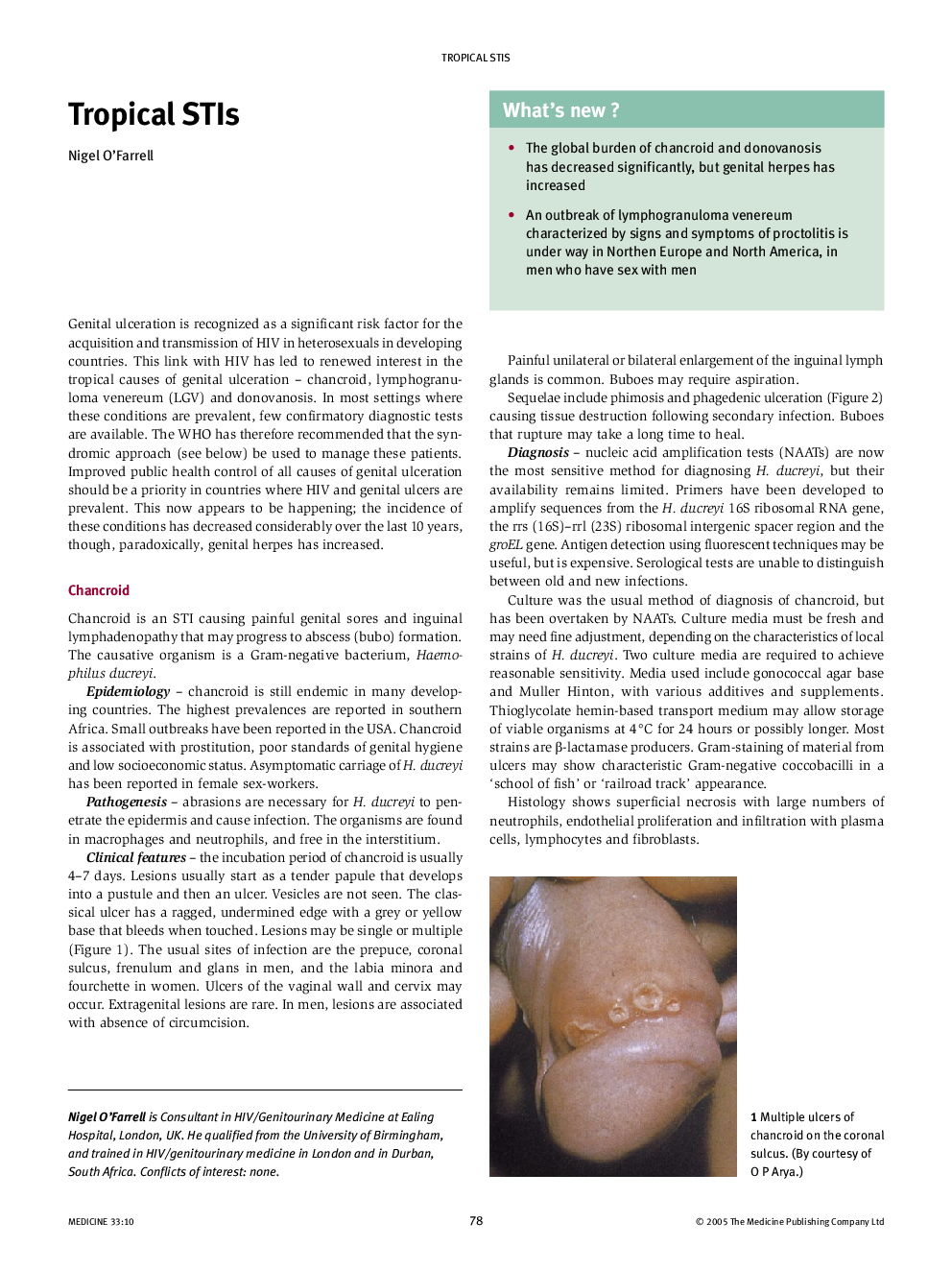| Article ID | Journal | Published Year | Pages | File Type |
|---|---|---|---|---|
| 9300549 | Medicine | 2005 | 4 Pages |
Abstract
Chancroid, lymphogranloma venereum (LGV) and donovanosis (granuloma inguinale) are causes of genital ulceration found predominantly in tropical areas. Following recognition of the association between genital ulcers and HIV transmission, these conditions have been the subject of renewed interest. Although the incidence of all three conditions appears to be decreasing, a high index of suspicion should be maintained for new outbreaks of disease. Chancroid, (causative organism Haemophilus ducreyi) usually presents with painful sores similar to genital herpes. Polymerase chain reaction (PCR) tests are the most sensitive method of diagnosis. Treatment is with ciprofloxacin or erythromycin. LGV (causative agent Chlamydia trachomatis serovars L1-L3) usually presents with a single, small ulcer, followed by inguinal lymphadenopathy in the secondary stage. The tertiary or anogenital-rectal stage is associated with lymphatic vessel obstruction and complications including rectal stricture, fistula and adhesions. PCR tests are now available. Treatment is with doxycyline, 100 mg b.d. for 14 days. Donovanosis (causative organism Klebsiella granulomatis comb nov or Calymmatobacterium granulomatis) classically causes beefy, red ulcers. Four variants are reported - ulcerogranulomatous, hypertrophic, necrotic and sclerotic. Extragenital lesions are increasingly recognized. The diagnosis is usually confirmed by identifying Donovan bodies on tissue smears by direct microscopy. Treatment is with azithromycin. The WHO has recommended that these and other STIs in developing countries be managed by the syndromic approach that involves treatment for the most likely causes of a syndrome. Health education, condom promotion, contact tracing, compliance with treatment and voluntary testing and counselling for HIV should also be promoted.
Keywords
Related Topics
Health Sciences
Medicine and Dentistry
Medicine and Dentistry (General)
Authors
Nigel O'Farrell,
